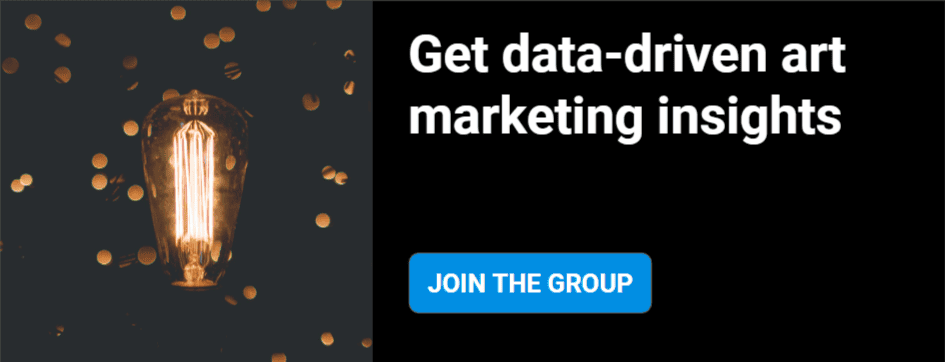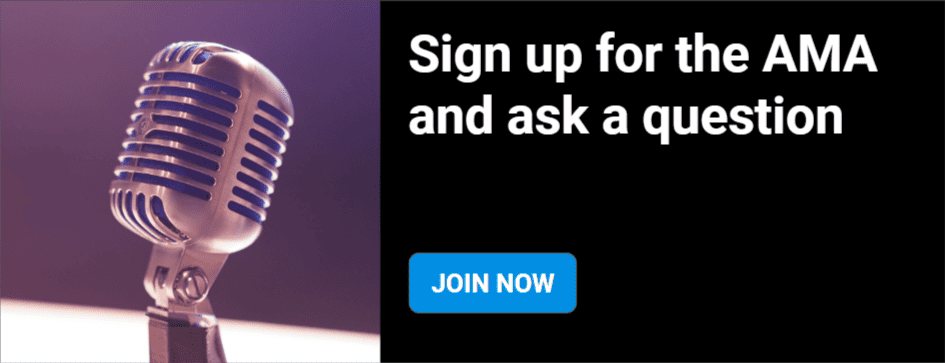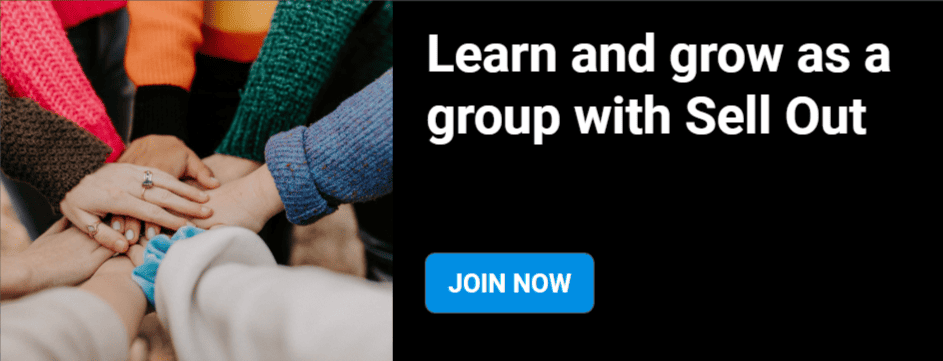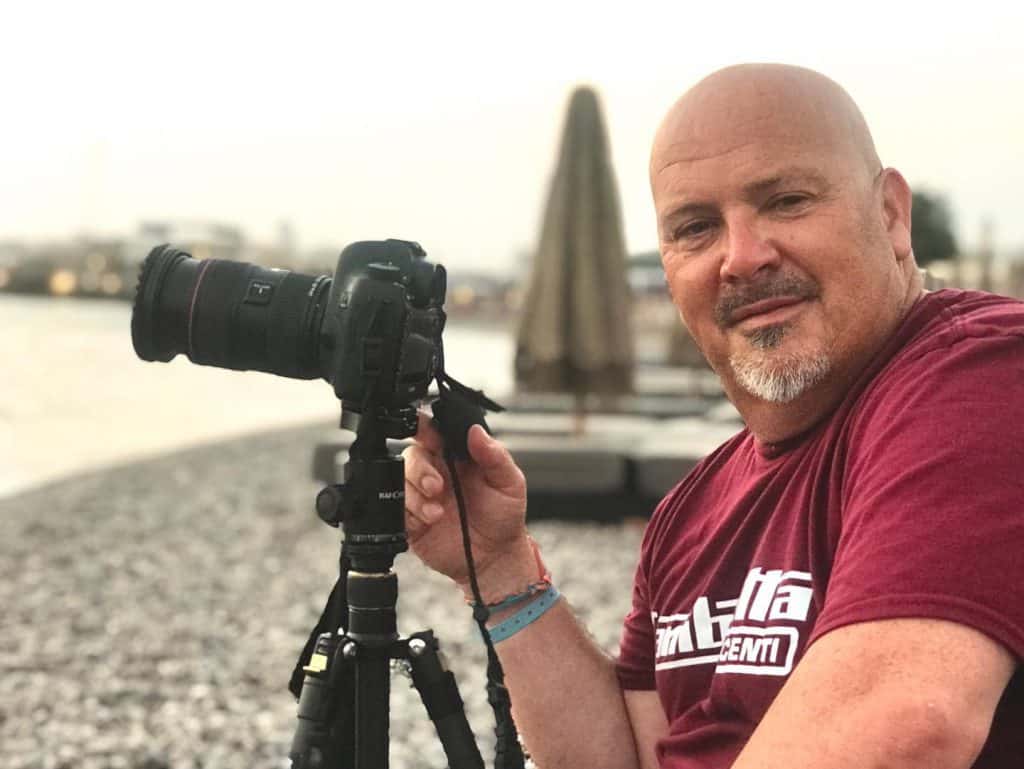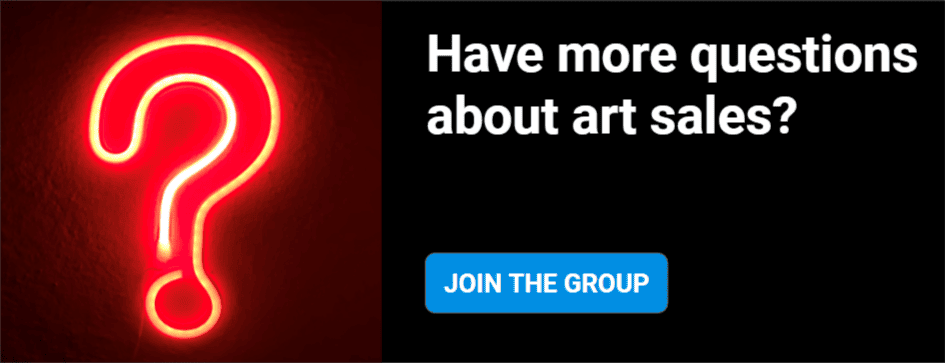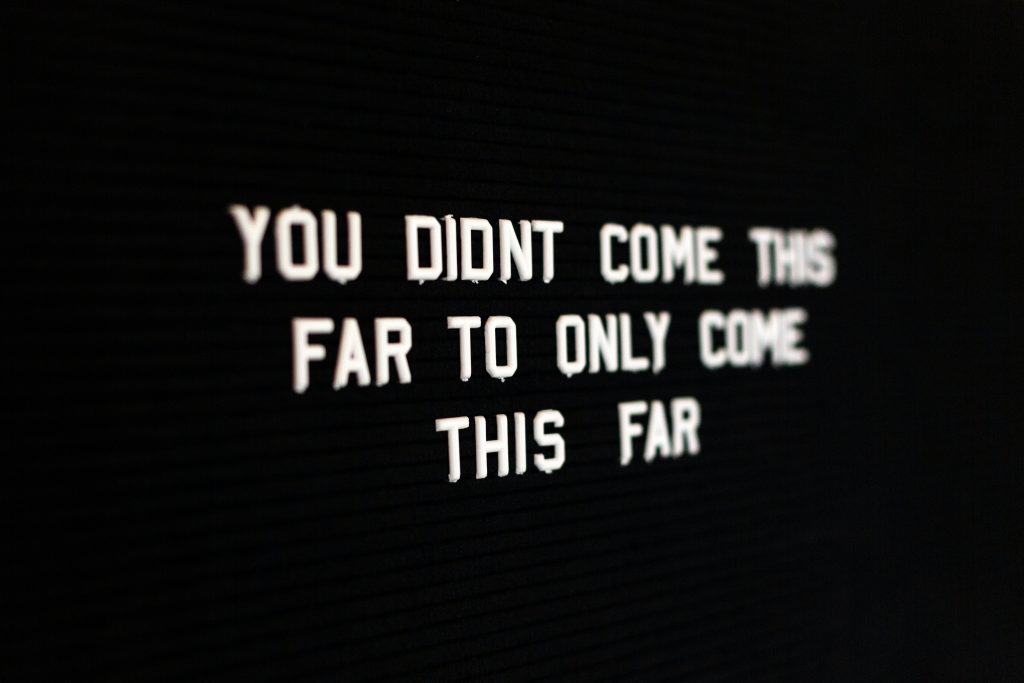
The ‘Ask Me Anything’ sessions (AMAs) are a huge hit in our Facebook community Sell Out: The Art of Selling Art. We discuss artists’ challenges and work out a plan together to help them improve their art sales. Here are the highlights from last week’s AMAs so you can get a flavour of what we talked about.
First up we had Antoine Renault, a painter based out of a small island off the Atlantic coast of France. He has had a successful run with offline sales at art fairs but now his main goal is to create an action plan to sell more prints online. You can also watch the full conversation with Antoine here.
The most important factor driving online art sales is..
Scarcity! After reviewing Antoine’s current online setup, we realised this was the most important factor he needed to add in to drive his online sales.
Social media attention is fleeting and fast moving, so you must try to nudge people over the line and convert them to buyers whilst you have the chance. You might not get another shot. The way to do that is using scarcity, it’s the nudge people need to go from like to buy.
If you visit the websites of artists who sell high volumes, paradoxically you’ll often see nothing or very little is actually available to buy. You might also see a message saying: ‘I’ve got nothing available at the moment, sign up to my newsletter and to find out when I do.’ At that point, you know that they’re winning the scarcity game because the people who sign up will realise they will have to act fast when that email pops into their inbox.
So how do you create scarcity? Do you sell a really tight limited edition that you know is going to sell out? Or do you run a timed print sale?
This question was posed by Kasia Clarke. Kasia is a contemporary abstract artist based just south of London. Her originals are hugely successful and she now wants to develop the print side of her business. View the full conversation with Kasia here.
There is no better time than right now
If something’s abundant, we are likely to perceive its value as being lower. But if it has a limited availability, then the value increases almost disproportionately. Remember the toilet paper crisis during the pandemic? An example of the Scarcity Principle in action. That’s just how our brains work. It’s a heuristic1 that human beings have been using since forever, it’s an evolutionarily advantageous psychological quirk. And it has an equal effect on online art sales.
Having prints always available might seem more logical, because it gives people the chance to get exactly what they want, when they want it. Yet this would also mean there’s no urgency for the buyers. Instead, what you need to do is to drive sales by creating an urgency to buy. That means offering a very small amount of work for a limited period of time, as opposed to having work that can always be bought, all the time, on your site.
A limited edition combined with a timed drop is the pinnacle of urgency. But in our experience we have found that it’s the time limitation that is the most effective part of it, which makes the limited edition part optional. After testing out an implementation of the urgency strategy, Kasia shared back with the group that she sold 3 times more than what she had sold previously. It’s clear that urgency works.
Generally speaking, there is a very small window of opportunity to get some permanence out of the transitory nature of social media traffic. So what do you do? Have clear objectives on what response or action you want from your audience.
Marion King is a British-Irish contemporary artist based in the UAE. She has been actively experimenting with her content strategy to increase organic reach and grow her follower base. We discussed her Instagram strategy in detail and came up with the next steps for her content plan. Watch the entire conversation here.
Small steps for passive people!
Social media users are generally in a relaxed, passive state when scrolling through content feeds. In order to make an art purchase, they would have to go from this passive state to thinking about buying a piece of art. They would have to choose the artwork, think about the size they want, go find their card, enter all their information and complete the transaction. It’s a big ask and a lot of cognitive load compared to the passive state of mind they’re in.
However, tapping the Follow button is relatively easy for them in that passive state. We recommend therefore that you use your paid advertising campaigns to drive follows. Once you people are followers, they will see your organic content. You can use this engaging organic content to push clear CTAs (calls to action) to subscribe to your newsletter. Your newsletter can then give them buying opportunities and these are likely to sit in your inbox and be visible to them for far longer than your social posts are, giving them a reminder to buy when they are in a more active state of mind.
So, instead of trying to get people on Instagram to go directly from browsing to buying, the much easier task is to take them from passive state to a follower, then an email subscriber and ultimately a buyer. That’s the user flow with the least amount of resistance.
Mathilde Morant is on a mission to make a watercolour painting of every lighthouse in Iceland, all 137 of them! She’s been working on it since 2018. Clearly, she has an amazing story to tell and she wants to tell it in a way that can capture the maximum audience possible. It was a fun content brainstorming session with Mathilde. Watch it here.
Stop those thumbs!
The first three seconds of your content is the hook and that’s what grabs people’s attention and gets them to stop scrolling and start watching. Once the hook has done its job, the content takes over and you can tell a deeper story about your work. So you need both good content and good hooks.
Let talk about hooks first. These are generally visual or audio-visual. It could be a dreamy, ASMR type sequence of brushstrokes or pen movements. It can be something else hugely engaging about your process such as, in Mathilde’s case the extraordinary lengths she has gone to to reach all these lighthouses and paint them in sometimes extreme weather conditions. It could simply be showing the end result, so long as it is distinctive enough. It could be something you do that’s funny, engaging, visually unusual or interesting or something that provokes curiosity or suspense. It could be something different to any of the above, so long as it works. The hook is the thing in your content that causes a thumb stop. It’s the thing that stops people scrolling and starts them watching. This is a signal to the algorithm to show your content to more people, thereby increasing your reach.
To find your hooks you should; (1) experiment with different options (2) research what other people are doing and pay particular attention to the first 5 seconds of a reel or the first image in a carousel that gets a disproportionate number of views for someone (compared to their follower numbers) and (3) keep a keen eye on the things that get you a disproportionate number of engagements compared to the other posts you have made, and do more of them with variations.
If people watch a video part-way, they are much more likely to watch it till the end because they feel invested in it. So once your hook does its job then your narrative, your content, the thing you want to say takes over and you have a bit more time to tell someone something a little deeper and more meaningful.
So, what could that deeper and more meaningful thing be? Here’s a few topics you could talk about:
- The inspiration or motivation for your art
- Your creative process to show what goes into making an artwork
- How your personality reflects in your art; talk about your backstory
- How your skill set developed over the years
- About the project or print drop and what it means to you
- Why did you choose a particular subject/theme
- Documentary or behind the scenes of working on this project
- Sketchbooks, moodboards or journals showing every step of the concept to creation
- How your surroundings influence your art
- Your favourite artwork from the project you are working on and why
- Your aspirations for your future as a creative professional
Simon Plant, a commercially successful lifestyle photographer of 35+ years, wants to focus on building online art sales as an important part of his career. He wanted some advice on the best ways to grow his mailing list and the kind of incentives he could offer to accelerate that growth. It was an interesting question that required detailed discussion of email newsletter strategy for artists. Watch the full video here.
Build a connection with your subscribers
It is important to not only send emails about buying stuff. At least 50% of the time your emails should be focussed on interesting content about you, your inspiration or your art and your creative process. These would be things that people can’t see on your social feed, it should be exclusive, bonus content they only get from subscribing to your mailing list.
Also it is important to avoid thinking that you’ve got to move someone from being an Instagram follower straight to a buyer of your work. That does happen but what’s just as likely to happen is that after following you, they join your mailing list. That should be an equal focus for you and you should make it as friction-free as you can to do that.
Once someone does subscribe to your newsletter you will find eventually one of your emails hits their inbox at the right time for them to make a purchase. If it has the right content and the right CTAs (calls to action), they will buy. So, when you put effort into putting great content out there, always use it to get people to subscribe to your newsletter, unless the content has another more pressing purpose.
So add a clear CTA at the bottom to sign up to your mailing list, tell them how to do it, and give them a value proposition for doing it. That means telling them what amazing benefits will come from being a subscriber, but vary that value proposition and make it relevant to the post. So if you have posted about an exhibition you were in then say, “to get updates and invites to future shows, sign up to my email newsletter”. If you have just posted some content that shows your creative process, say “to see more of my creative process, sign up to my mailing list”. If you add the same CTA & value proposition everytime, people will become blind to it.
We are loving these insightful conversations with the supportive and focussed group of artists in our Facebook group. You can join them here.
Also sign up for an AMA if you’d like us to devise an online art sales strategy for you. Join the group and let’s come up with some good ideas together!
1 For more information on this, read Daniel Kahneman’s ‘Thinking, Fast and Slow’
